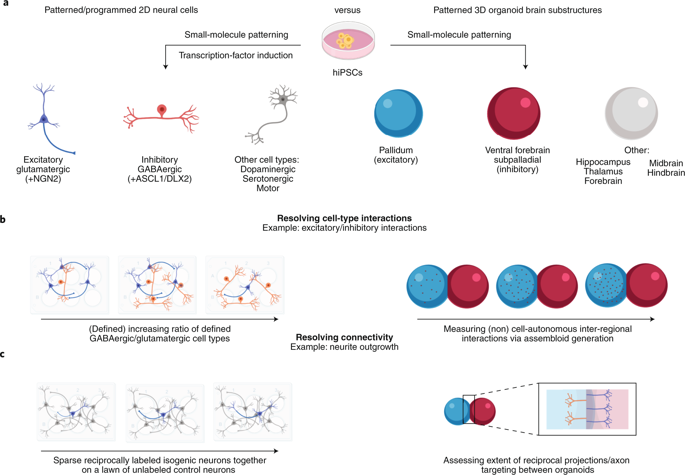Nature Genetics ( IF 31.7 ) Pub Date : 2020-03-23 , DOI: 10.1038/s41588-020-0596-3 Michael B Fernando 1, 2, 3, 4 , Tim Ahfeldt 2, 3, 4, 5, 6, 7 , Kristen J Brennand 2, 3, 4, 6, 7, 8, 9, 10

|
The genetic architecture of each individual comprises common and rare variants that, acting alone and in combination, confer risk of disease. The cell-type-specific and/or context-dependent functional consequences of the risk variants linked to brain disease must be resolved. Coupling human induced pluripotent stem cell (hiPSC)-based technology with CRISPR-based genome engineering facilitates precise isogenic comparisons of variants across genetic backgrounds. Although functional-validation studies are typically performed on one variant in isolation and in one cell type at a time, complex genetic diseases require multiplexed gene perturbations to interrogate combinations of genes and resolve physiologically relevant disease biology. Our aim is to discuss advances at the intersection of genomics, hiPSCs and CRISPR. A better understanding of the molecular mechanisms underlying disease risk will improve genetic diagnosis, drive phenotypic drug discovery and pave the way toward precision medicine.
中文翻译:

模拟脑部疾病的复杂遗传结构。
每个个体的遗传结构都包含常见和罕见的变异,这些变异单独或组合作用会带来疾病风险。必须解决与脑部疾病相关的风险变异的细胞类型特异性和/或环境依赖性功能后果。将基于人类诱导多能干细胞 (hiPSC) 的技术与基于 CRISPR 的基因组工程相结合,有助于对不同遗传背景的变异进行精确的同基因比较。尽管功能验证研究通常一次在一种细胞类型中单独进行一种变异,但复杂的遗传疾病需要多重基因扰动来询问基因组合并解决生理相关的疾病生物学问题。我们的目标是讨论基因组学、hiPSC 和 CRISPR 交叉领域的进展。更好地了解疾病风险背后的分子机制将改善基因诊断,推动表型药物的发现,并为精准医学铺平道路。











































 京公网安备 11010802027423号
京公网安备 11010802027423号